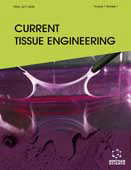Abstract
The structures of scaffolds for tissue engineering have significant effects on the seeding, migration, and proliferation of the tissue cells. Fibrous scaffolds consisting of microfibers or nanofibers have attracted increasing attention and applications in tissue engineering because of their high porosity and surface area and their ability to direct cell growth and alignment. However, water-soluble and hydrophilic polymeric microfibers and nanofibers lose their fibrous morphology in aqueous conditions such as body fluid and culture media. Cross-linking has been proven an effective method for stabilizing fibrous structure and improving mechanical properties of the fibrous scaffolds. In this article, we will review the current technologies for fabricating cross-linked fibrous scaffolds by the combination of electrospinning and different cross-linking methods including chemical, physical and photo-cross-linking. Their effects on solvent resistance, biocompatibility, mechanical properties, and cell viability will be discussed. Chemical cross-linking with nontoxic cross-linkers such as genipin and the reactive electrospinning with in-situ photo-cross-linking are promising new technologies to fabricate novel nanofibrous scaffolds with enhanced solvent resistance and mechanical strength as well as tunable biodegradation property.
Keywords: Electrospinning, nanofibers, chemical cross-linking agent, physical cross-linking, photo-cross-linking, solvent resistance, biocompatibility, mechanical properties, hydrophilic, biochemistry.
 36
36

